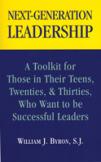On the Rise
We all assume that we know what a leader is and what leadership entails. The theme is prominent in the Taoism of Lao Tse (604-531 B.C.), in Thucydides’ portrait of Pericles, in Niccolò Machiavelli’s The Prince (1513, 1532), in Max Weber’s writing on charismatic authority. The Bible offers foundational stories of Moses the liberator, the valorous if flawed King David, the surpassingly wise Solomon. But once you ask what leadership really is (is it a position or a function, for example?), clarity vanishes.
In fact, serious studies of leadership first developed disciplinary and methodological focus only at the turn of the 20th century. (The very term “leadership” came into popular English usage only then.) Until about 1930, leadership was identified with the influence of “great men.” In the 30s and 40s social psychologists began to concentrate on how leadership emerges in groups (at first small groups, but then, puzzlingly, in large groups or organizations as well). In the 40s and 50s, the key question became what traits might be discovered to be universally present in leaders. When responses to that question became inconclusive and even contradictory, emphasis shifted in the 50s and 60s to the identification of key behavioral patterns (leadership as a form of behavior). In the 60s and 70s, many studies focused on developing situational theories of leadership, emphasizing the contingency that is unavoidable in all organizational life.
The most significant single study of leadership late in the century was undoubtedly James MacGregor Burns’s Leadership, published in 1978. Whereas social psychologists and students of management had previously dominated the field, Burns approached it as a political scientist concerned with moral values and common purposes. Distinguishing two forms of leadership, transactional and transformational, he advocated the latter especially and understood it to occur “when one or more persons engage with others in such a way that leaders and followers raise one another to higher levels of motivation and morality.”
Burns significantly influenced the explosion of leadership studies published in the 1980s. Most of these shared a focus on excellence, entailing a covert return of the “great figure” theory of leadership. (You studied the “best” companies and the “best” C.E.O.’s.) They were also marked by an increasing realization that a multidisciplinary approach was necessary. In the probing vision of Joseph C. Rost, they were all also beholden to an industrial view of society that centered on management. Rost pleaded “for a new leadership narrative with revised myths and rituals that fit the postindustrial paradigm…in the postmodern world of the twenty-first century.”
In the continuing flood of leadership programs and literature, young people beginning their first jobs (or vocations) have been generally overlooked. It is just this population that William J. Byron, S.J., effectively addresses in this book. It is many things in one: an anthology of insightful and inspiring business stories; an annotated bibliography of the vast literature; a manual of leadership opportunities (how to run meetings, how to write an op-ed); and, throughout, a sustained reflection on how faith can influence leadership.
Byron, former president of the University of Scranton and The Catholic University of America, has also taught economics and social ethics at three other universities and is the author of numerous books known for their practical wisdom and cogent prose. Next Generation Leadership offers a typically direct understanding of leadership as “the art of inducing others to follow” or “the art of inducing change.” Its first three chapters offer a kind of foundation for future leaders, explaining the dimensions of leadership, surveying a range of prominent examples from political, business and church life, and analyzing what he calls “a leadering attitude,” with its various styles and competencies (the more leaders master certain competencies, the more effectively they can alternate their styles, putting them “on manual, not autopilot,” as Byron puts it).
In the short, punchy chapters that follow (4 through 11), Byron assembles his “leadership tool kit.” Young readers are reminded that good leaders listen. They learn to be effective speakers. They work at their writing. They are readers. They value critical, practical intelligence. Cultivating their memories helps them to be more present to their colleagues (as does experience in the theater!). They can make decisions. They are ready to effect change (another summary definition of leadership).
In the last two of these chapters, on decision making and effecting change, Byron’s personal history and strength as a Christian ethicist come especially to the fore, as he introduces the lessons of Ignatian group discernment and emphasizes the vision necessary for significant change. This is still more the case in his concluding chapters on the ethics of leadership (he is hopeful that a more communitarian ethos may be revived in our country) and the classic notion of the servant-leader (a term coined by Robert Greenleaf, who is perhaps Byron’s favorite authority). With James L. Connor, S.J., he has also written an extensive Appendix that presents “Principles of Ignatian Leadership” (“unapologetically Christian and…completely countercultural”) for use by young leadership training groups who want their leadership to be faithful and their faith to lead.
The book is written for emerging leaders. Their elders, before making a gift of it to “the next generation,” can learn from it as well—not to mention leaders of the church at every level who are called to a more dialogical, collaborative and transparent dedication to our all too often sinful but also always holy church in changing times.
This article also appeared in print, under the headline “On the Rise,” in the September 19, 2011, issue.








